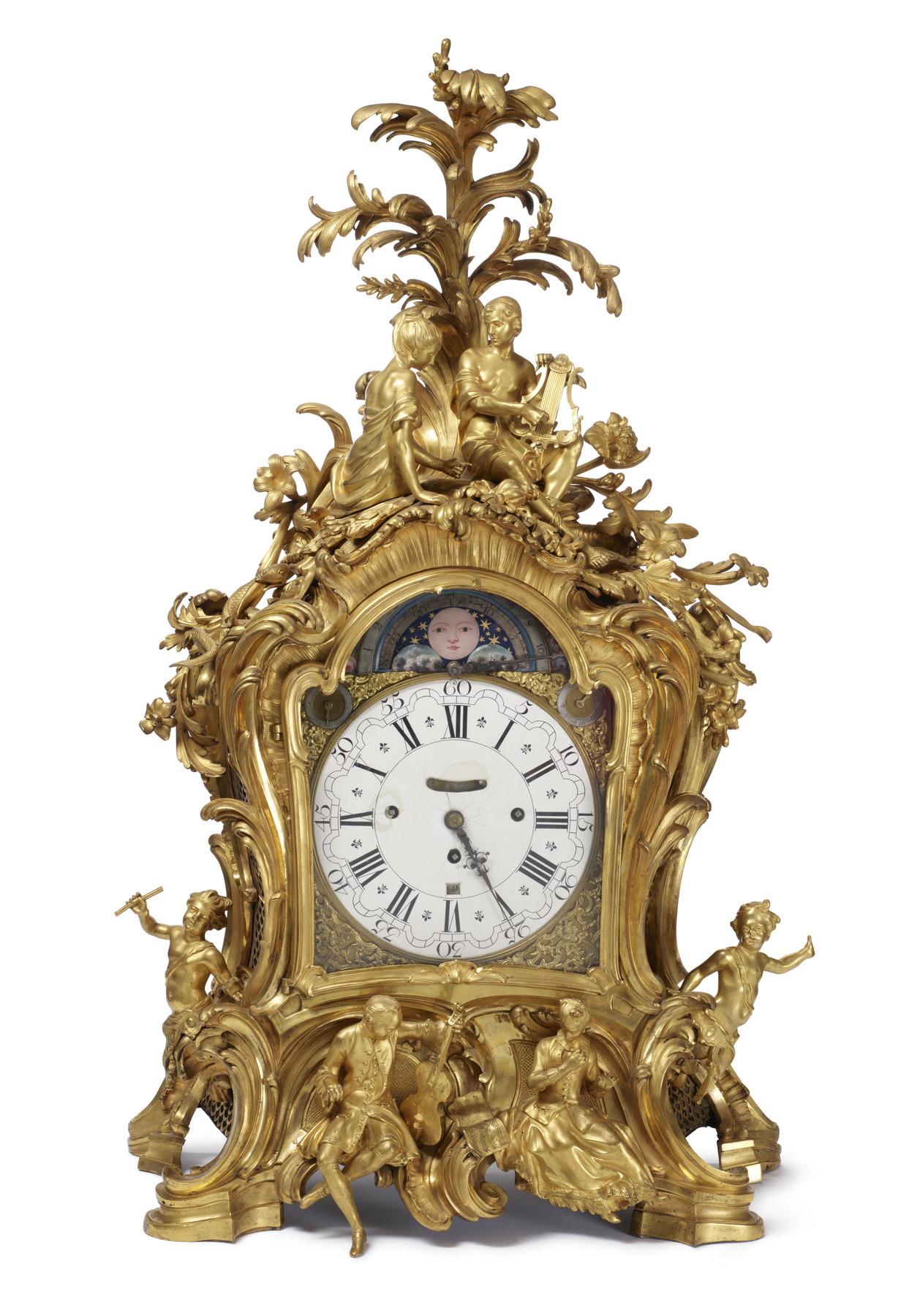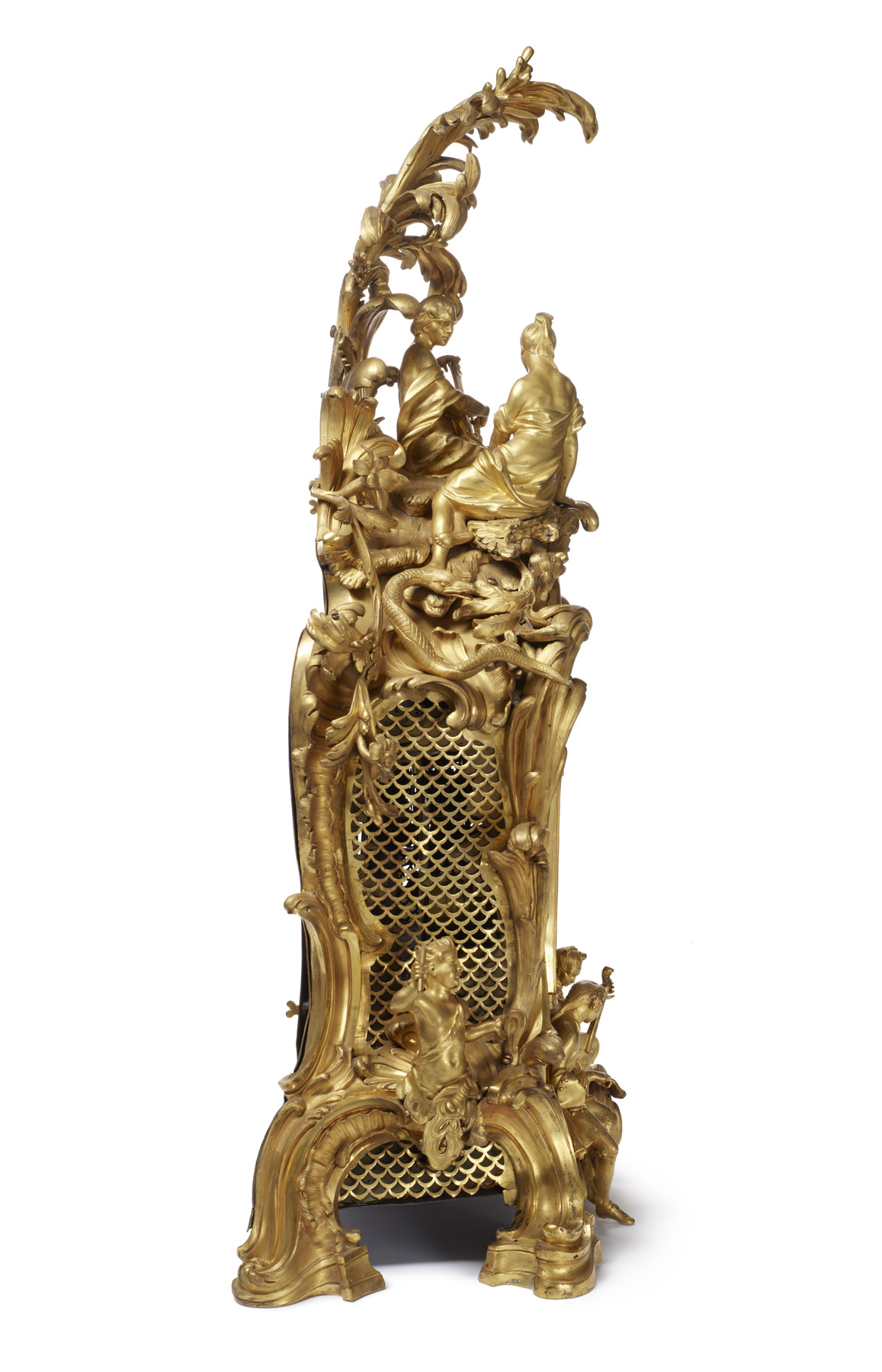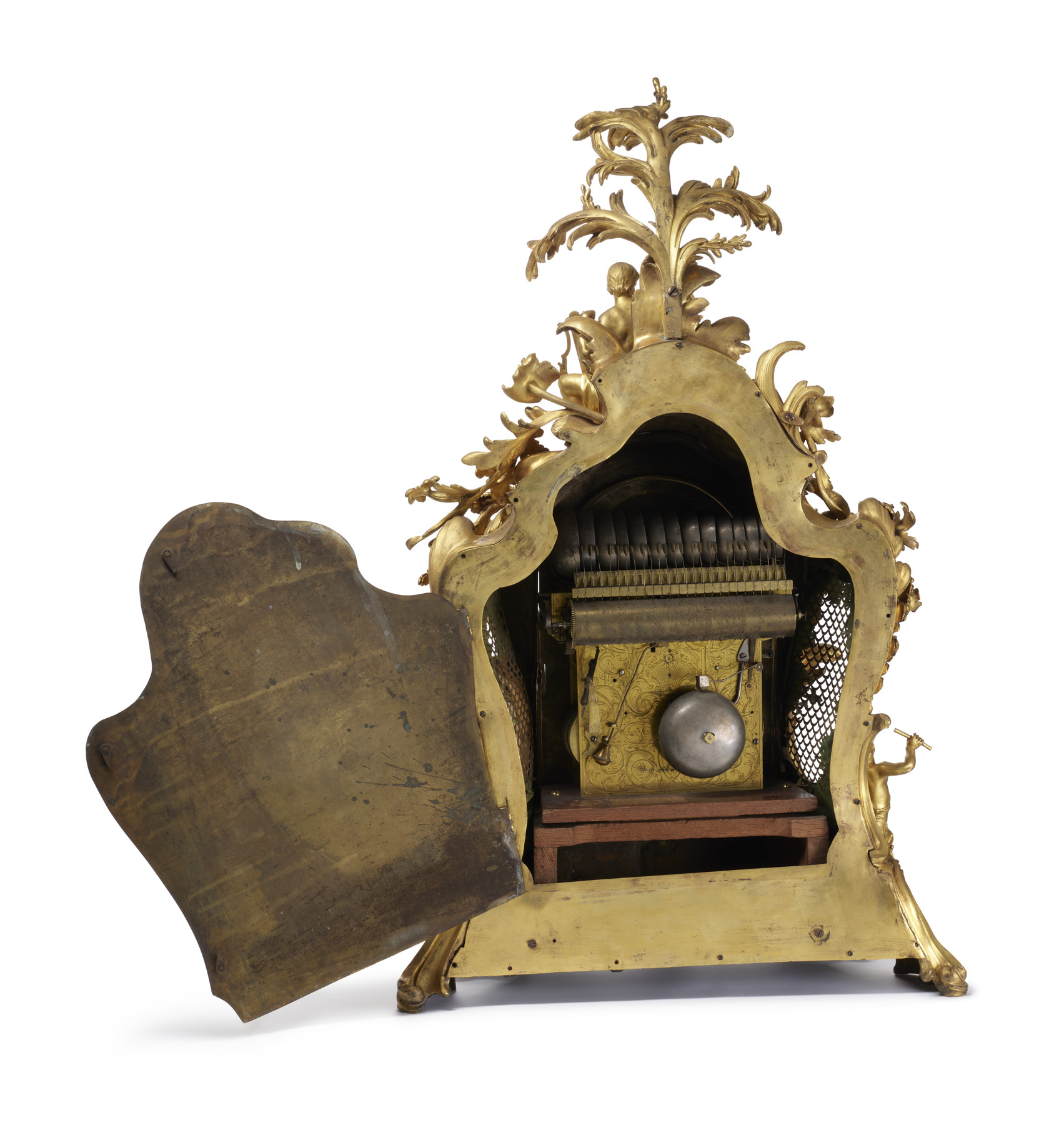Clock
This clock is a fine example of French rococo design, the highly ornamental style that usually involves asymmetrical compositions of scrollwork, foliage, shells and other decoration that rose up in Italy and France in the 1720s and 1730s and continued to be popular across Europe and North America into the 1770s. It features, in addition to elaborate and fanciful scrollwork and vegetal decoration, two figures at the bottom, below the clock face itself, representing a male in 18th-century dress playing a stringed instrument (a viol or viola de gamba) and a female figure, also in 18th-century dress, who was likely playing a flute, which is now lost. They are leaning over a book of music, which is so finely cast that it could likely be read today. At the top of the clock is another pair of figures, a male who is clothed in what is likely intended to represent dress of ancient Greece or Rome playing a lyre and a female figure similarly dressed bending over an element that is now missing, but might have been another instrument.
The case itself was created by Jean-Joseph de Saint-Germain, one of the most important makers of gilt bronzes working in Paris at the time. It was likely then sent to Saxony where its German-made mechanism was inserted. This mechanism is quite elaborate and includes a 12-hour dial with hour and minute hands, hour or quarter strike (that may be switched on and off), date at lower center of dial, lunar phase dial with lunar calendar, a musical mechanism (probably played at the top of the hour) that plays one of ten different tunes selected by moving the large hand at the top among the numbers 1-10 (can also be switched on or off).
This clock is purported to have been sold by the royal house of Saxony from the palace in Dresden in the early 20th century. While this provenance has yet to be confirmed, it is quite intriguing—a German aristocrat, possibly Augustus III (1695–1763), King of Poland and Elector of Saxony, may have commissioned or been given this important example of French design and then had it fitted out with an equally impressive German mechanism, both of which worked together to celebrate music—perhaps indicating it was featured in a room where musical performances were often staged. It also may be connected to the complex political world of mid-18th century Europe, where France and Saxony had been on opposite sides of the War of Austrian Succession in the early 1740s but became closely allied when Maria Josepha of Saxony, Augustus III’s daughter, married Louis, the son and heir of Louis XV, the king of France. While her husband did not become king she was mother of Louis XVI, the next king. Maria Josepha’s marriage in 1747 prompted a great deal of exchange between the two kingdoms, and it may be that this clock was an example of such exchanges.
Inscription
Provenance
Provenance (from the French provenir, 'to come from/forth') is the chronology of the ownership, custody, or location of a historical object. Learn more about provenance at the Walters.
Said to be owned by the King of Saxony, the Royal Schloss in Dresden; purchased by Jacques Seligman and Co., New York, before 1924; purchased by Henry Walters, Baltimore, November 29, 1924; by bequest to the Walters Art Museum, 1931.
Conservation
| Date | Description | Narrative |
|---|---|---|
| 5/13/1958 | Treatment | cleaned |
| 5/15/1981 | Examination | examined for condition |
Geographies
France, Paris (Place of Origin)
Measurements
H: 39 3/4 × W: 24 13/16 × D: 12 5/8 in. (101 × 63 × 32 cm)
Credit Line
Acquired by Henry Walters, 1924
Location in Museum
Not on view
Accession Number
In libraries, galleries, museums, and archives, an accession number is a unique identifier assigned to each object in the collection.
In libraries, galleries, museums, and archives, an accession number is a unique identifier assigned to each object in the collection.
58.247










